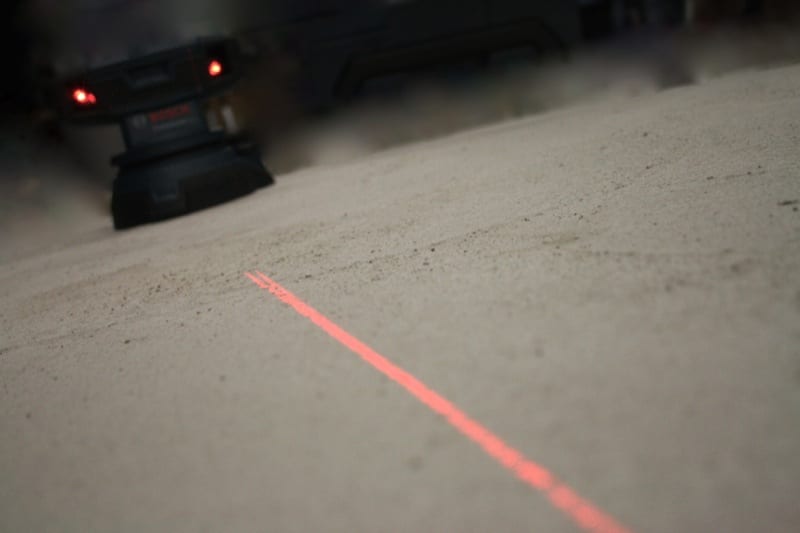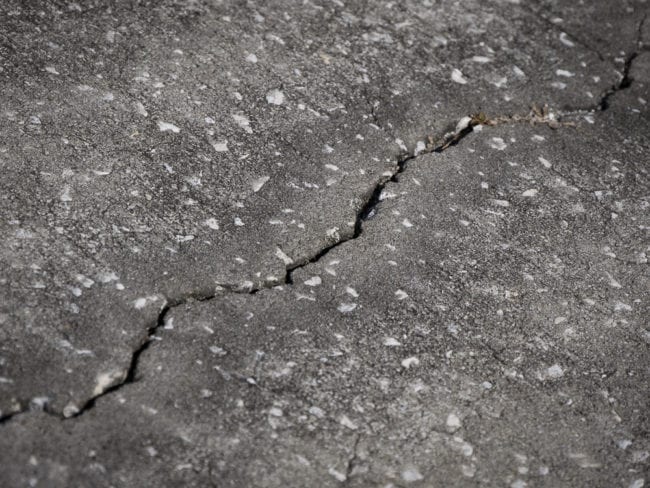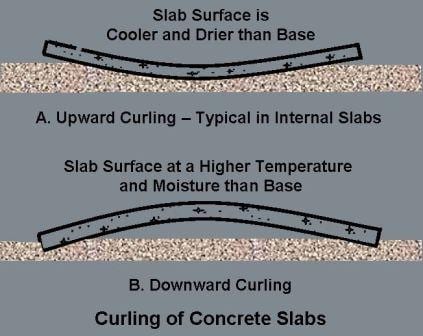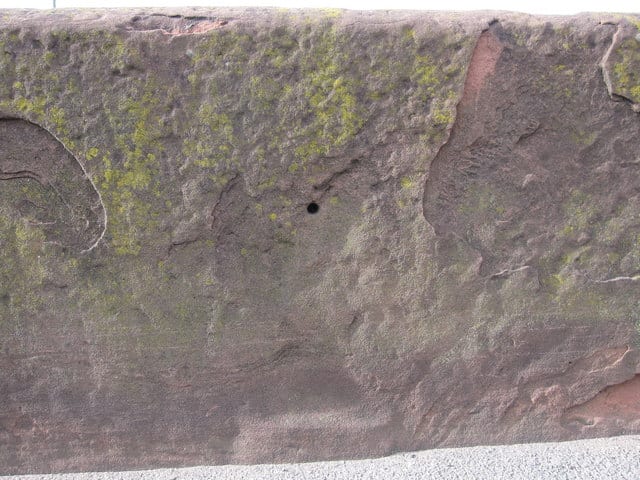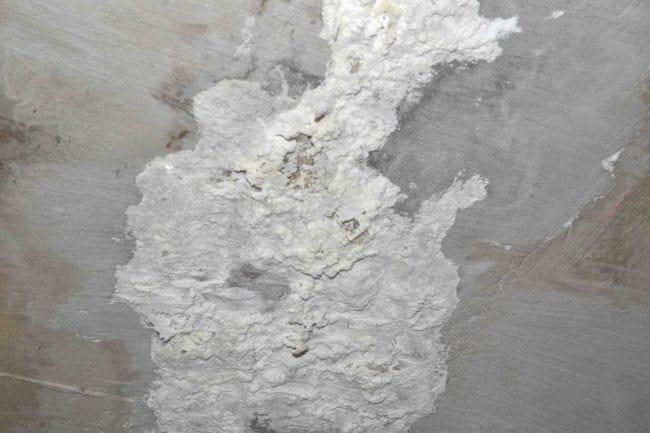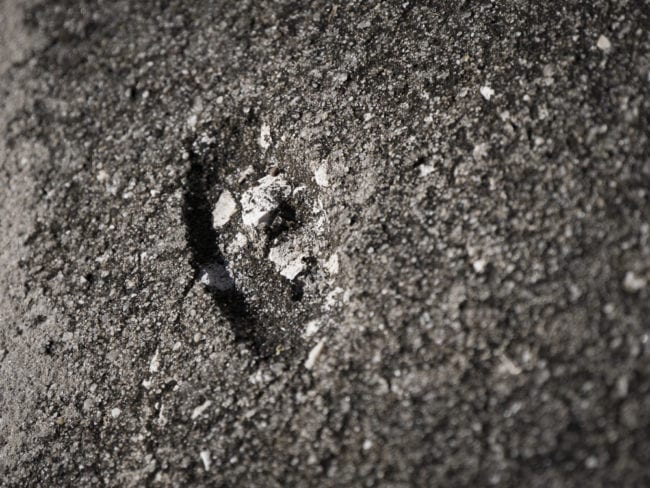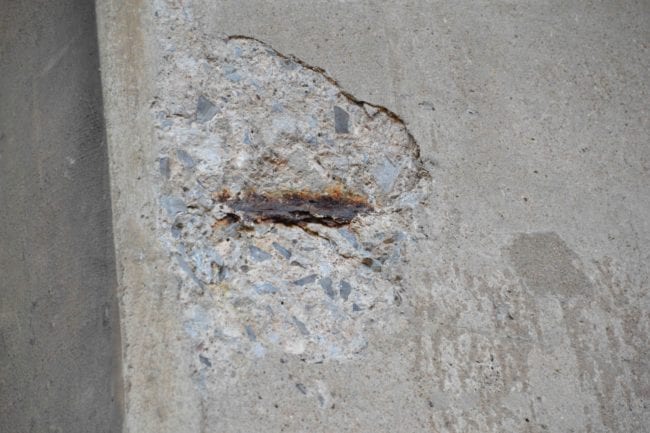So you want to be a mason, eh? Much like drywall finishing, concrete flatwork is an underappreciated art. Get it wrong, and it’s obvious. But, get it right and, with the possible exception of other flatwork Pros, no one notices. So, the goal is to do good enough work that no one ever notices. However, that is much easier said than done, as anyone who has tried to finish a concrete slab can attest. Like many other things, concrete finishing is all about timing and knowing how the environment affects the curing process. With all that in mind, here’s what our Pros like to share with apprentices on how to avoid defects in concrete slabs.
Don’t Sweat It… Or Maybe Do Sweat It
Many defects in concrete slabs are more than skin-deep; they’ve literally bubbled up from underneath. The concrete expels excess water (bleed water) and air while it cures. If the surface densifies too soon, or if it dries before the bleed water and air can be expelled, a defect will likely make its way from inside the slab to the surface. The finisher must be aware of temperature and humidity extremes that affect the timing of the finishing process. This could include not just the absolute extremes, but also any significant differences between the subgrade and the concrete surface. Generally, a slab should be poured, struck off, and bull floated. Then, finishing should be delayed as long as possible to allow all bleed water and air to escape. If that doesn’t happen, a slab could exhibit some of the following issues…
Cracking
Cracking can happen for a number of reasons. Drying shrinkage, thermal contraction, restraint to shortening, subgrade settlement, and applied loads could all contribute to cracks in your concrete. But preventative steps can be taken to minimize cracking.
Avoiding Cracking:
- Make sure that your mix isn’t too wet.
- Use the least amount of mix water necessary to keep your concrete workable.
- Minimize your mix water content by maximizing the size and amount of coarse aggregate you use.
- Use low-shrinkage aggregate.
- Avoid calcium chloride admixtures.
- Avoid extreme changes in temperature.
- Isolation joints will prevent restraint from adjoining structures, which will minimize cracking.
- Contraction joints placed at intervals of 30 times the slab thickness will allow slabs to move a bit without cracking.
- Use finishing aids or plastic sheets to help avoid plastic-shrinkage cracks.
- When using vapor barriers, use a 4″ layer of damp, compactible fill choked off with a fine-grade material. Use a low water-content mix if the concrete must be poured directly on a polyethylene vapor barrier.
- Avoid using excessive cementitious material.
Crazing
Crazing is a term for surface cracks that don’t affect the function of the slab. These will form a web or network of cracks that kind of look like a county by county map of your state. It happens when the concrete surface warms and dries much more quickly than the underlying concrete. Relatively light shrinkage on the slab surface is to blame here.
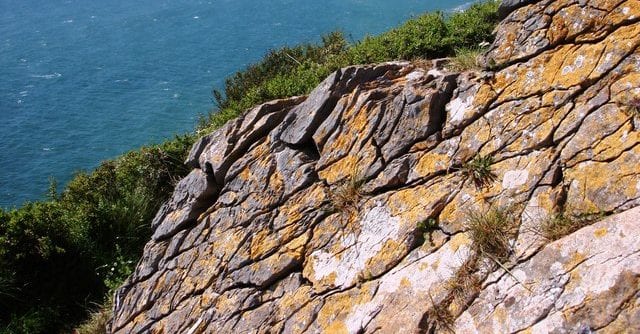
Avoiding Crazing:
- Be aware of climate conditions; low humidity, high temperatures, direct sunlight, drying winds, or any combination of these factors can contribute to crazing.
- Keep the surface temperature of your concrete slabs lower.
- Start curing your slab early, since it will stop rapid drying and will lower the surface temperature.
Typically, crazing doesn’t get fixed because it doesn’t really threaten the service life of the slab, and it doesn’t deteriorate over time. While you can apply sealers and hardeners to crazing cracks, they can accentuate the appearance of the crazing cracks.
Curling In Concrete Slabs
It might seem strange to those unfamiliar with concrete that a slab can curl as it cures. But, there a variety of factors that cause concrete slabs to curl up at the edges and corners. A high shrinkage due to moisture content, unreinforced concrete, or dramatic differences in the curing speed between the surface and the underlying concrete can cause curling.
How To Avoid Curling:
- Use a low-shrinkage concrete mix.
- Practice proper control-joint spacing (30 x the slab thickness).
- Keep the slab at uniform moisture content and temperature.
- Use steel reinforcement 2 in. down from the surface of the slab.
- Thickened slab edges will help avoid curing.
- Use shrinkage-compensating concrete, post-tensioning, and vacuum dewatering.
Correcting Curling Issues:
- Cut additional control joints where the slab has curled.
- Inject cement grout in the void. Once the grout hardens, grind down the curl to the slabs original plane.
Blistering
The concrete surface may blister if it begins to dry much more quickly than the rest of the concrete. Blisters are small pockets of air and bleed water that get trapped under the sealed, airtight surface of the concrete slab. They form unsightly bumps of various sizes, and they generally occur due to three main causes.
Entrapped Air
An excess amount of entrapped air held within sticky or tacky concrete can become sealed when floating or finishing the concrete at an early stage. This can be prevented, to some extent, by reducing the sand in the concrete mix.
Vibration
Vibration is an issue when it comes to blistering. A lack of vibration, or insufficient vibration, during the compacting process will not release entrapped air from the curing concrete. Over-vibrating concrete can leave the surface of the slab with excessive fine particles, which will cause the surface to crust over and dry out too early.
Finishing Spongy Concrete
Finishing the concrete while it’s still spongy can contribute to blistering as well. Because finishing tools tend to compact the concrete, trapped air is forced toward the surface. Air pockets become trapped under the surface skin of spongy concrete, forming blisters later. Floating the concrete a second time can help reduce blistering.
Other Methods For The Prevention Of Blistering
- Use a fog sprayer or slab cover to reduce evaporation.
- Warm the subgrade before pouring concrete on cold days.
- Use a lower-slump concrete.
- Avoid over-working the concrete.
Delamination
Similar to blistering, delamination occurs when bleed water and air become trapped under a prematurely finished mortar surface. Delamination becomes more likely to occur when factors that extend the bleeding time of the concrete combine with factors that speed up the surface setting. An example of this would be pouring a slab on cold ground while it’s hot and sunny.
Unfortunately, delaminations are difficult to detect during finishing, and only become apparent after the concrete surface has dried and the affected area has been crushed under some weight.
The steps to avoiding blistering are the same steps needed to avoid delamination. Basically, the overriding principle is to keep the surface from finishing before the rest of the slab finishes.
Dusting
This powder on the surface of your concrete slabs, called laitance, is the accumulation of moisture and fine particles of mortar. This is the weakest and least wear-resistant layer of concrete, and when it exists at the surface of your slab, you know that something is amiss. Floating and troweling concrete with bleed water mixes that extra water back into the surface skin, weakening the top layer’s strength and wear-resistance.
Other Reasons For Dusting
- Water applied during finishing.
- Exposure to rainfall during finishing.
- Too much water in the mix.
- A low cement content.
- Spreading dry cement over the surface to speed up finishing.
- Lack of proper curing.
- Carbonation cause by unvented heaters.
- Dirty aggregate.
- Surface freezing.
Fixing Dusting Issues
- Grind down the layer of laitance, exposing the concrete beneath.
- Add a surface hardener to improve wearability and reduce dusting.
Discoloration
There is no one single factor that causes concrete discoloration. Uneven concrete color can be caused by a number of factors. Calcium chloride admixtures, cement alkalies, wonky curing, and other things beyond the finisher’s control can all factor into a slab’s color. Hard-troweling can even contribute to concrete discoloration.
Minimizing Discoloration
- Avoid using calcium chloride admixtures.
- Keep your batches uniformly proportioned; use consistent concrete ingredients.
- Use proper placing, finishing, and curing procedures.
Correcting Discoloration
- Immediately flush the slab with hot water and let it dry. Repeat until the discoloration disappears.
- Acid wash with 3% acetic or phosphoric acid to lessen carbonation and mottling discoloration.
- Treat with 10% sodium hydroxide solution to blend light areas into darker areas.
- Use 20%-30% diammonium citrate solution.
- Use a concrete stain to make color variations less noticeable. Darker stains work better.
Efflorescence
Efflorescence is similar to discoloration. It is a (usually) white deposit that develops on the surface of the slab, and although it’s generally harmless, it doesn’t look great. Efflorescence can be caused by a number of things, but they all kind of boil down to salt, water, and evaporation.
Avoiding Efflorescence
- Use clean mix water that is free of acids, alkalies, minerals, and salts.
- Avoid using unwashed sand for your concrete.
Correcting Efflorescence
- Unless there is an external salt source, efflorescence will become lighter over time.
- Dry-brush, followed by a water rinse and wet brushing.
- Light waterblasting or sandblasting, followed by water rinse.
- Acid wash using 1%-10% muriatic acid solution. Use 1%-2% for colored concrete.
Popouts
Popouts are conical fragments that break out from the surface of the concrete leaving shallow depressions in your slab. Caused by aggregate absorption and expansion, they’re generally not detrimental to the service life of the slab, but they’re ugly and they affect the smooth, flatness of the slab.
How To Avoid Popouts
- Use a concrete with the lowest possible water content and slump.
- Use a crushed-stone or beneficiated-aggregate concrete.
- Avoid finishing concrete with bleed water still on the surface.
- If working in hot, dry, or windy weather, cover the surface in plastic after screeding and bullfloating. The idea is to slow down evaporation before final finishing.
- Slope the slab for water drainage if possible.
- Use air-entrained concrete.
- Keep concrete temperatures between 50°-70°.
- Use a low-alkali cement.
- Avoid using vapor barriers if possible.
- Use wet-curing methods after finishing.
Fixing Popouts
- Drill out the spalled particle. Fill the hole with patch material, like dry-pack mortar.
- Thin-bonded concrete overlays can be used on surfaces with too many popouts to patch individually.
Scaling and Flaking
Scaling happens when the surface mortar is exposed to freezing and warming cycles. Water within the concrete will freeze, creating hydraulic pressure between layers of the concrete. When the pressure exceeds the tensile strength of the slab, layers of the concrete chip and flake off.
Avoiding Scaling
- Use a concrete mix with durable and well-graded aggregate, and use a low-slump. Wet, low-strength concrete without air-entrained voids will scale off quickly.
- Slope the concrete to allow for water drainage.
- Use proper finishing techniques. As seen in so many issues with concrete, sloppy rush-jobs cause more problems than they’re worth.
- Cure with wet burlap, curing paper, or plastic until the concrete reaches 70% of the specified strength. You can use curing compounds in the spring and summer months.
- Allow the concrete 30 days to air dry before an anticipated freeze.
Maintenance and Correction for Scaling Issues
- Breathable surface treatments made from linseed oil, silane, or siloxane can be applied if the concrete is of poor quality. This will help protect against further damage.
- Thin-bonded overlays or surface grinding can be used if the underlying concrete is of a high quality.
- Avoid using non-breathable epoxies, as moisture can freeze under the coating and cause more delamination.
Spalling
Spalls are deeper defects than scaling. They generally appear as circular depressions in the surface of the concrete. Like scaling, expansion within the concrete, bond failure, and weathering can all contribute to spalling, as well as bad joints and corroding steel reinforcements.
Avoiding Spalling
- Be mindful of the anticipated service and environment of the slab you’re pouring, and design it accordingly.
- Use proper mixing, pouring, finishing, and curing practices.
- Take any special precautions necessary. For example, when using steel reinforcement, an epoxy coating around the steel will help protect it against corrosion due to chloride-ions.
Low Spots
Low spots are exactly what they sound like, and they will affect drainage and serviceability of the slab. They are generally caused by poor forms and poor screeding, overly wet concrete, poor lighting during placement and finishing, and poor placement and finishing.
How To Avoid Low Spots
- Use a low-slump, low-water content concrete mix.
- Be able to see what you’re doing; use adequate lighting.
- Check grades and levels, and check them often. Fill low areas.
- Use a vibrating screed for strikeoff.
- Instead of a bullfloat, try using a “highway” straightedge to smooth out the surface.

